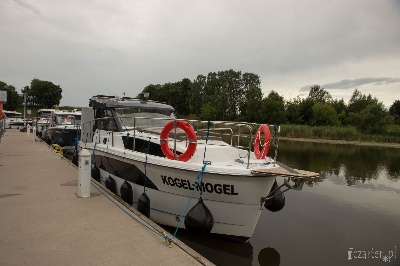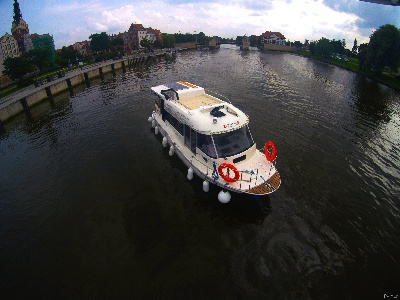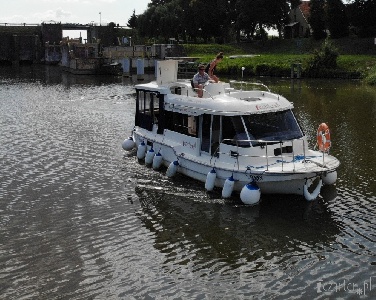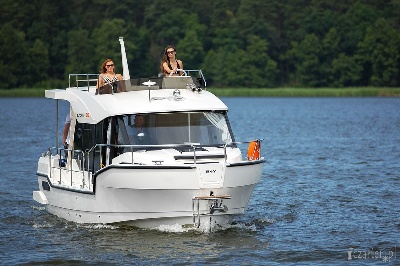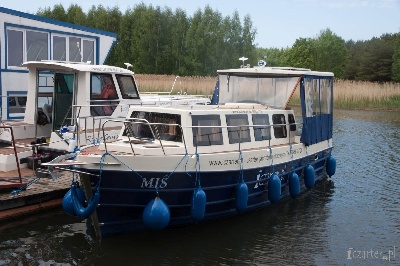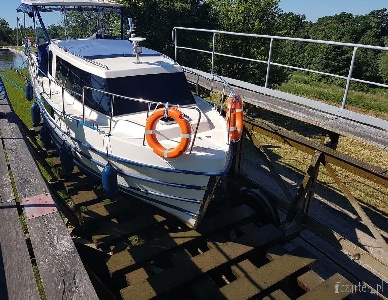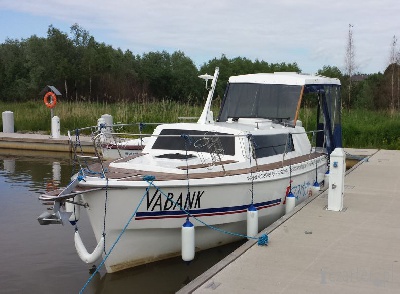Zulawki
charters of motor yachts
Zulawy Loop and the Elblag Canal » Zulawki
The beginnings of permanent settlement in Żuławy go back to the thirteenth century., but large-scale colonization was carried out only by the Teutonic Knights in the fourteenth century, forces are brought by German colonists. Villages under German law (in Chelmno version) were dense buildings along one street (square), and the houses built by the settlers had the characteristic peak arcades supported by some massive pillars.
Two hundred years later, during the reign of Polish kings Żuławy followers began to settle Protestant sect of the Mennonites, who persecuted the family emigrated to the Netherlands, known for its religious tolerance Republic. Mennonite villages were scattered plan, individual farms accounted for in them a certain distance from each other along the way, the navigable channel or even in the middle of the field assigned to the colonists.
Also houses the mennonite were erected by patterns imported from the Netherlands. Instead of large multi-storey frame building with arcades built Mennonites small bungalows, combined into a single string of communication with the livestock building and barn. To guard against floods, these custom pens Dutch were erected on artificial hills called “terpami”.
Zulawki village is a living open-air museum, in which the two traditions intertwine settlement. Founded in 1352. By the Grand Master of the Teutonic Winrych von Kniprode, and then partially settled by the Mennonites in the sixteenth century. Is part of a typical linear village and part of the village buildings colony on terpach. A curious thing is that they have survived here until five arcaded houses (the oldest from 1721.), Three on the main road through the village (one, unfortunately, in ruins) and two islands Mennonite settlement, one of them is also the fashion Dutch united with outbuilding! Two of these houses are in addition remarkable, carefully restored interiors - which is a unique phenomenon Żuławy - full of antique furniture, paintings, Dutch faience and copper pots (which can be visited with the consent of the inhabitants).
The local church is the true neo-Gothic and comes "only" from 1841., But its interior has been preserved baroque set of equipment from an older temple.
To complete the picture, we are still brand new drawbridge, the first of its kind built in Żuławy after World War II. The bridge leads to is across Szkarpawa Drewnica village, which has preserved one of the last two Żuławy windmills, grain mill in the so-called type. Koźlak of 1718. On the headland between the Vistula and the mainstream Szkarpawa existed in the sixteenth and seventeenth centuries. very important bastion fortress called Gdansk Head, which defended the access to Gdansk from the side of the Vistula River waterway. Today there is no trace after it, but her name was transferred to the sluce on Szkarpawa built in 1895.

